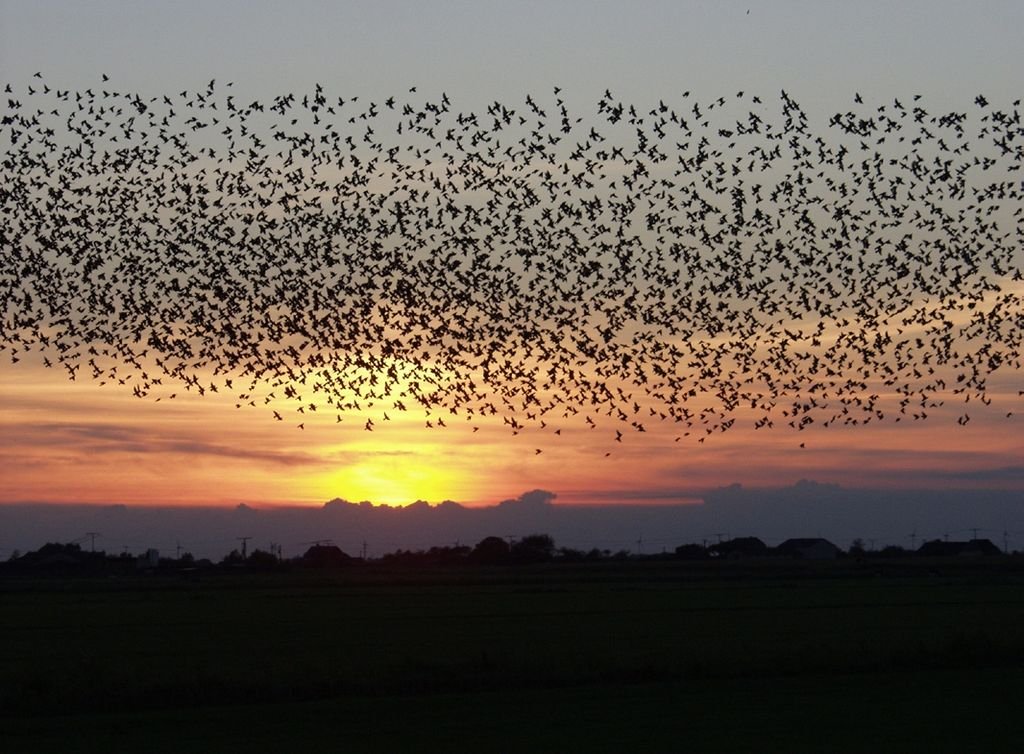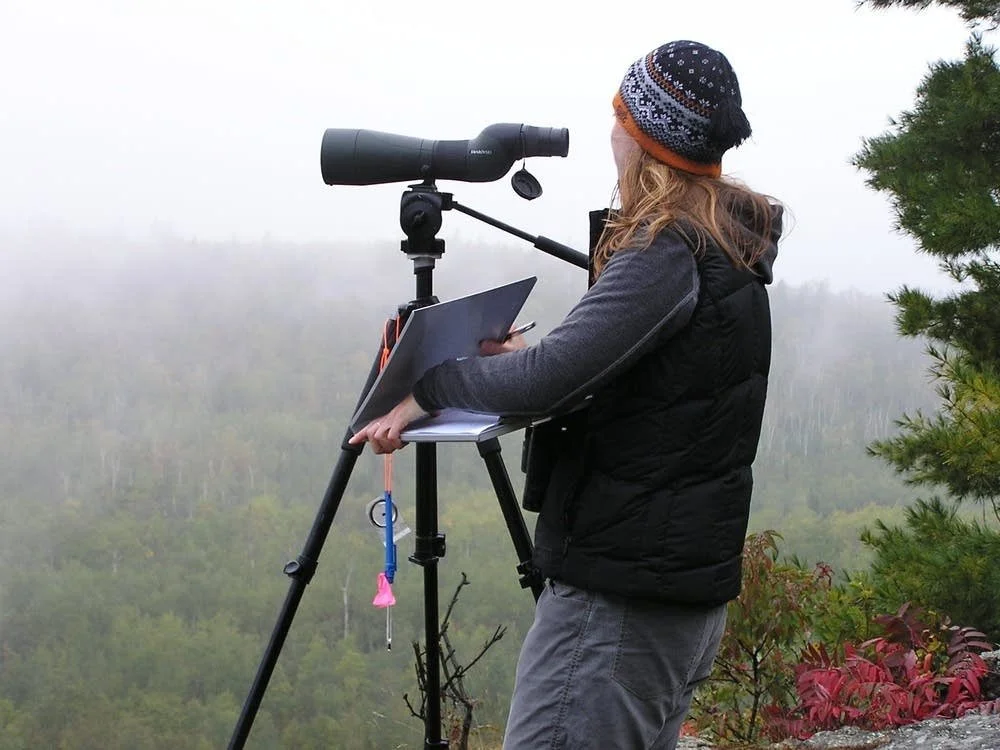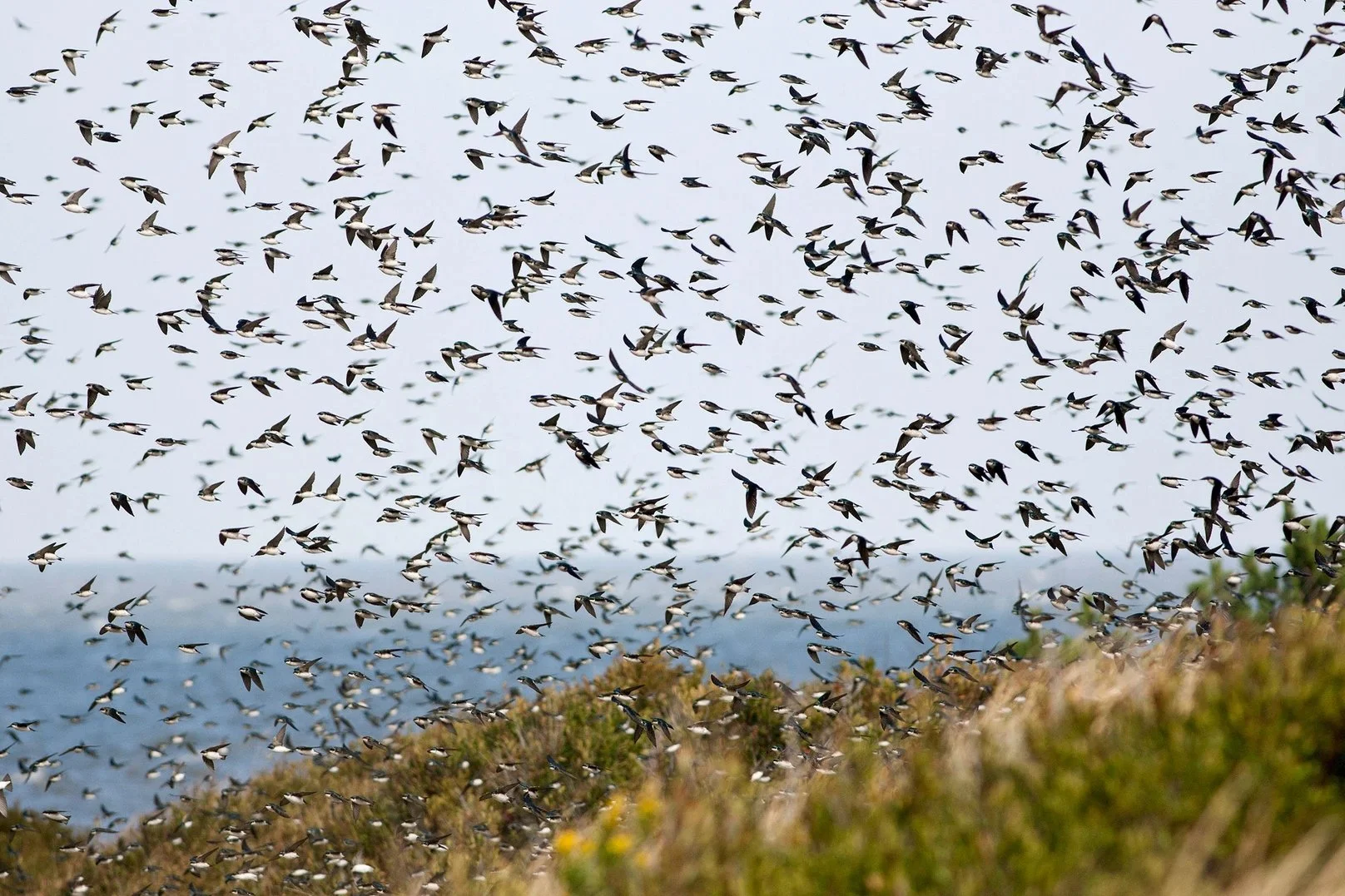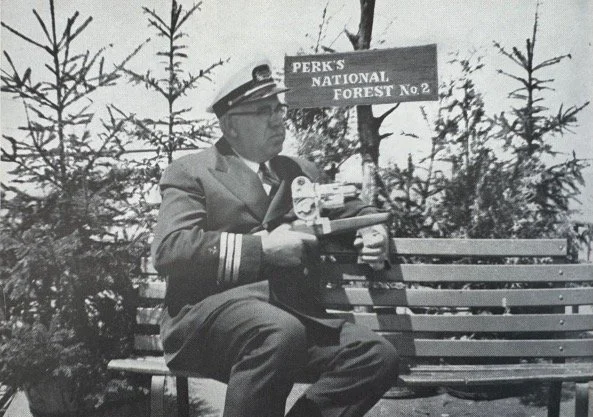
PROJECT UPDATE
Chasing Bird Migration Through Time
A long-ago ship captain helps protect a natural phenomenon under threat.
Haunted by the ghost of an ore ship captain
FREIGHTER ENTERING FOG. Migratory birds crossing the U.S. Great Lakes often seek refuge aboard vessels to rest.
September 1962. The captain moves down the stairs, coffee steaming from the cup in his hand. A leather camera strap digs into the shoulder of his black peacoat adorned with two vertical rows of gold buttons and matching cuff stripes – the officer jacket of the Pittsburgh Steamship Division. The captain stops briefly near the bottom stair to sip the hot liquid down from the cup’s lip, lest he spill in his eagerness to see what he had predicted would happen this night.
Upon opening the heavy metal door, the captain is met with the thick cold scent of wet iron and lake. He squints into the lights illuminating the cargo deck as his eyes adjust to the ship’s unnatural glow in Lake Superior’s dark freshwater sea.
“Captain Perk,” the watchman yells, “watch your step. Many are still alive!”
RECORDING MIGRATORY BIRDS. The northern coast of Lake Superior hosts massive migratory bird movements during the fall migration.
I met Captain J. P. Perkins in September 2009. I was a young and eager PhD student; Perk was a black and white figure within in the pages of a sixty-year-old Audubon magazine. Several days had passed since I’d witnessed something that my mentors and colleagues at first dubbed a product of a vivid imagination. I stood on an overlook near the coast of Lake Superior and as the sun rose, tens of thousands of warblers, thrushes, grosbeaks, sparrows, and others filled the air above and around me. The morning flight of migrants disappeared just as quickly as it began. I told anyone who would listen.
Sometime later, a worn copy of a magazine article landed on my desk with a simple note, “you should read this”. By then, the captain had been gone for 20 years.
-Anna Peterson, excerpt from essays developed with funding from the Minnesota State Arts Board
The fog had changed to a misty drizzle. When I aimed the searchlight upward, the beam revealed heavy flights of passing birds. Others fluttered around the ship’s lights by the dozen. At times there were so many on the bridge deck that the lookout had to be careful not to step on them.
Captain J. P. Perkins, U.S. Steel Corporation
Audubon Magazine 1964
Challenge: A Migration Phenomenon under threat
Each fall 90% of North America’s boreal forest biodiversity is lost to the sky in one of the world’s largest natural phenomena — the boreal bird migration. But in the past 50 years, North America has lost 2.9 billion birds — one third of the avian population. Most of those lost are migratory birds. Of the 5 billion birds migrating south in the fall, more than one-third will not survive to return in the spring. The bird migration phenomenon, which has existed for eons, is now under threat of disappearing.
Aided by northwest winds, millions of migratory birds travel on a movement trajectory that guides them towards the U.S. Great Lakes region. Ten percent of the U.S. population (over thirty million people) lives within the watersheds of the Great Lakes. This includes the metropolitan areas of Chicago, Milwaukee, Cleveland, and Detroit, and the cities of Duluth, Green Bay, and Buffalo. These same coastal areas host disproportionally large concentrations of birds during migration. Impacts from the most dangerous human-centric threats to birds like habitat loss, predators, pesticides, and collisions with manmade structures such as buildings, communication towers, wind turbines, and powerlines, are intensified in these populated coastal regions.
Tracking these five billion birds’ travels has captured the fascination of many scientists and bird enthusiasts over the years, including a U.S. Great Lakes ore ship captain. This project seeks to tell Captain Perkins’ historic story and foster awareness and protection for the bird migration phenomenon he sought to understand and the migration story that he worked to tell.
MIGRATING TREE SWALLOWS. Migratory birds tend to concentrate in large numbers along any number of U.S. coastlines including the Great Lakes. Image: William Leaman/Alamy
Captain Perkins and his onboard forest
From the 1930s to 1970s, Captain J. P. “Perk” Perkins sailed the U.S. Great Lakes onboard freighters that carried ore and other cargo between Lake Superior and Lake Erie. Among Perk’s passions was birds. For the majority of his life as a mariner, Perk recorded the migratory birds that sought shelter in a cobbled assemblage of balled trees he set on his freighter’s deck for their refuge.
AN ONBOARD BIRD REFUGE. and his onboard bird refuge built of potted trees. Below: The Benjamin F. Fairless and arrow indicating location of Perk’s National Forest. Images: J.P. Perkins, U.S. Steel
Mapping Migration Routes
After decades of sailing the Great Lakes, Perk could predict when his freighter would enter any one of the 17 different migration corridors he identified that hosted massive numbers of migrating birds. He produced a hand-drawn map to begin educating the public and scientific community about these over water movement corridors.
Map of the 17 migration corridors identified by Captain Perkins. Numbers reflect bird species identified. Image: J.P. Perkins
Project Strategy
quote from Doug
The Captain Perkins Project
We can learn a lot through comparing the captain’s historical records of bird observations to migratory bird species and timing in the Great Lakes region today.








